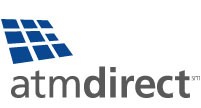
Special News Feature in Transaction World Magazine March 2006
Pay By Touch, San Francisco, Calif., was on the acquisition trail at the end of 2005 and is starting to emerge as a small, but significant player in the acquiring business, according to Les Riedl, President of Speer & Associates, Atlanta, Ga.
Pay By Touch’s specialty is biometrics, but with the recent acquisitions and others that could be made, Riedl expects the biometrics portion of the business to become an ever-smaller portion of the total enterprise. Riedl sees that as good for Pay By Touch’s long-term prospects because biometrics today has a small niche market and growth prospects are iffy. Though the pilot merchants using Pay By Touch’s biometric solutions like it, consumers as a whole still aren’t all that sold on the technology. This may be due to a heightened sense of privacy concerns after all of the publicity surrounding identity theft.
A quick look at Pay By Touch’s recent acquisitions:
 CardSystems $47 Million
CardSystems $47 MillionThe assets of CardSystems Solutions, Inc., a payment processing provider. Under the terms of the deal, Pay By Touch assumed responsibility for all CardSystems Solutions, Inc. assets and for payment relationships with reportedly 120,000 small and medium-sized merchants. The deal was completed primarily for stock and some cash. CardSystems provides integrated payment solutions to associations, financial institutions and independent sales organizations and retail merchants. Through these payment solutions, CardSystems processes more than $18 billion in Visa, Mastercard, American Express, Discover, online debit and EBT transactions annually. www.paybytouchpaymentsolutions.com
 7th Street Software, Inc. and Convena, LLC, two loyalty technology providers that Pay By Touch officials expect to significantly bolster the company’s loyalty offerings. 7th Street Software, Inc. is the developer of LoyaltySuite, a patent-pending technology that helps retailers automatically give shoppers personalized offers on the products they purchase most. The Convena, LLC assets add another layer to Pay By Touch’s loyalty offerings.
7th Street Software, Inc. and Convena, LLC, two loyalty technology providers that Pay By Touch officials expect to significantly bolster the company’s loyalty offerings. 7th Street Software, Inc. is the developer of LoyaltySuite, a patent-pending technology that helps retailers automatically give shoppers personalized offers on the products they purchase most. The Convena, LLC assets add another layer to Pay By Touch’s loyalty offerings. Capture Resource, a supplier of integrated reward programs and business process outsourcing solutions, further enhancing the company’s loyalty offerings. This acquisition enables Pay By Touch to offer customers interactive gift and reward programs, customized reporting, design, production, and Web access services. In addition, the company will offer retailers advanced information capture technology and database management. Pay By Touch assumes responsibility for all of Capture Resource, Inc. assets and will manage the company’s 120 million-plus consumer loyalty enrollment profiles, including more than 12,000 supermarkets and retail institutions. www.captureresource.com
Capture Resource, a supplier of integrated reward programs and business process outsourcing solutions, further enhancing the company’s loyalty offerings. This acquisition enables Pay By Touch to offer customers interactive gift and reward programs, customized reporting, design, production, and Web access services. In addition, the company will offer retailers advanced information capture technology and database management. Pay By Touch assumes responsibility for all of Capture Resource, Inc. assets and will manage the company’s 120 million-plus consumer loyalty enrollment profiles, including more than 12,000 supermarkets and retail institutions. www.captureresource.com BioPay LLC for $82 million in stock and cash.
BioPay LLC for $82 million in stock and cash.BioPay is a biometric services provider with two million enrolled consumers, 1,600 retail implementations, and more than $7 billion in transactions processed. BioPay specialized in biometrically authenticated check cashing, with more than 2 million consumers in retailers across 42 states. The deal was expected to close in the first quarter of 2006. www.biopay.com
 ATM Direct
ATM DirectATM Direct has a patent-pending software only PIN Debit solution for Internet transactions. They will incorporate the technology into the recently introduced Pay by Touch Online platform. www.atmdirect.com
The company continues to expand its merchant base as well. In early January of this year, 10 more grocery stores in Minnesota and North Dakota added Pay By Touch payment capabilities, adding to the estimated 2 million consumers that were already using the firm’s biometric payment solution, according to the company. Yet the total market for biometric payments is still small, according to Riedl and Marc Abbey, Analyst for First Annapolis Consulting, Annapolis, Md. Beyond grocery stores, the biometric payments have yet to catch on in other industries. The Pay By Touch technology has worked in the grocery stores because they are payment-intensive businesses with low margins and low returns on sales – so owners are willing to experiment on new, low-cost types of payments, Abbey says. Other types of businesses haven’t been as willing to experiment with new types of payment technologies.
“It’s an intriguing company, they have a lot of momentum,” Abbey adds. “Ever since they acquired InterCept, they’ve been building out their capabilities. But there are significant questions if biometrics itself has a broad enough appeal in the marketplace.
They’re a lot further along than I thought they would be at this point.” The technology itself is far ahead of the business applications for it, Abbey adds. “The interest on the consumer end is the weak link. Only time will tell how successful they will be.” Part of the reason for the company’s success so far is the financial wherewithal of the firm’s owners Riedel says. “They have a ton of money behind it.”
.jpg)
